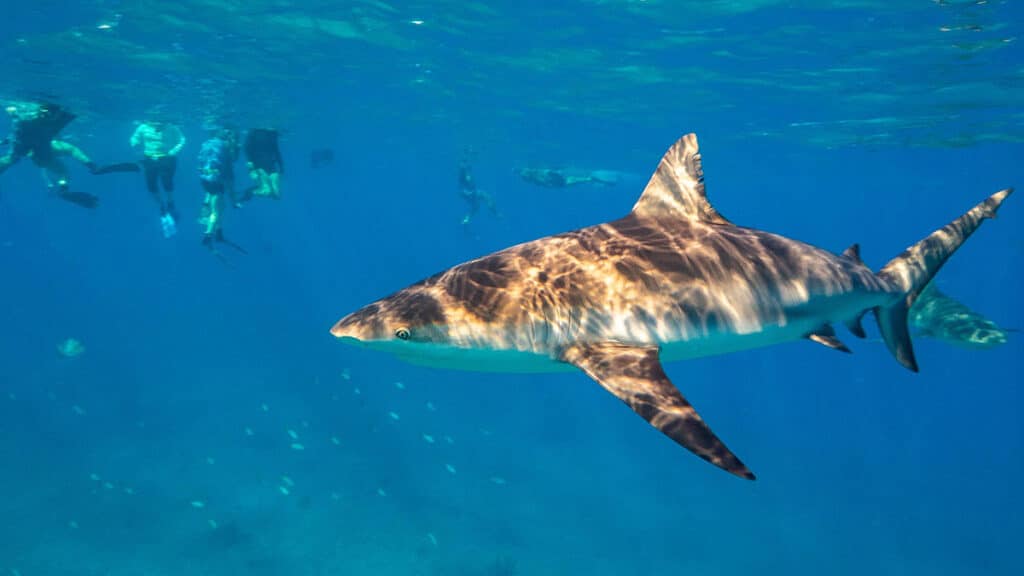Few species have as fearsome a reputation as sharks. But there’s far more to the story.
Yes, a few shark species have a deserved reputation as ferocious hunters, but unless you’re a fish or a seal, your odds of ending up as dinner for a Great White or Tiger shark are at least one in 3.47 million.
Meanwhile, the vast majority of shark species — including the 33-foot, plankton-eating Whale Shark — are completely harmless to humans. At the Bimini Shark Lab in the Bahamas, researchers have been working since 1990 to give people a better understanding of sharks. Some visitors come as day-trippers, while other participate in week-long, immersive programs that combine the charms of a tropical island stay with in-depth (and in-water) education about all species of sharks and their close cousins, rays, including the lemon and hammerhead sharks that are native to Bimini.
“Guests get to experience lemon sharks in their natural habitat,” says Baylie Fadool, media manager and outreach coordinator at the Bimini Biological Field Station Foundation. “They get knee-deep in the water and you just see all the fear subside. It completely changes your perspective on sharks.”
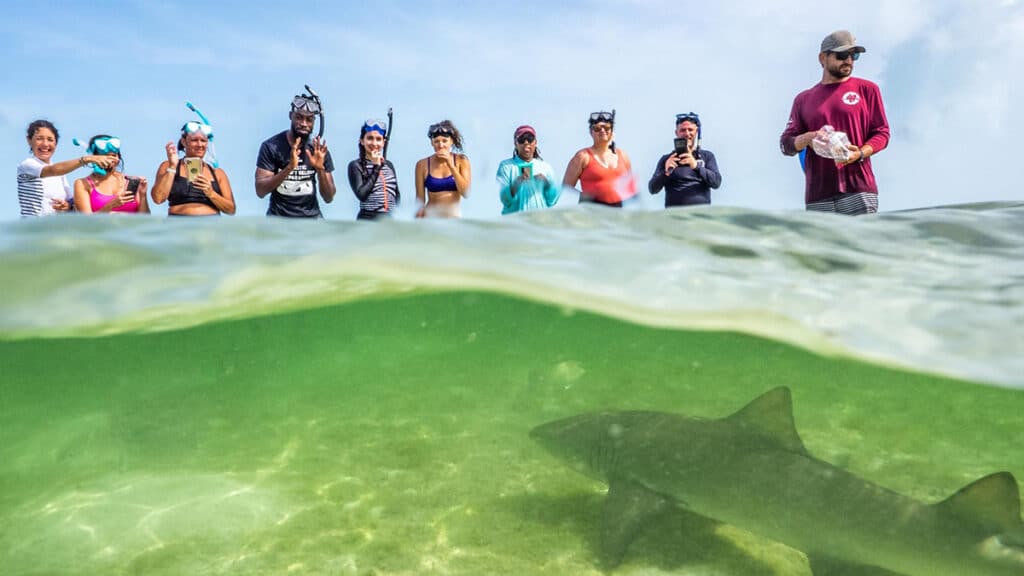
Fadool should know: prior to working on Bimini, she great up in landlocked Tennessee and went to school in Nebraska. She had never seen a shark in the wild before. “I had a mix of fear and excitement,” she admitted.
Now, Fadool regularly spends time swimming with 11-foot lemon sharks and hammerheads that can grow to be almost 20 feet long. “They don’t want to get closer to us than we want to get to them,” she said.
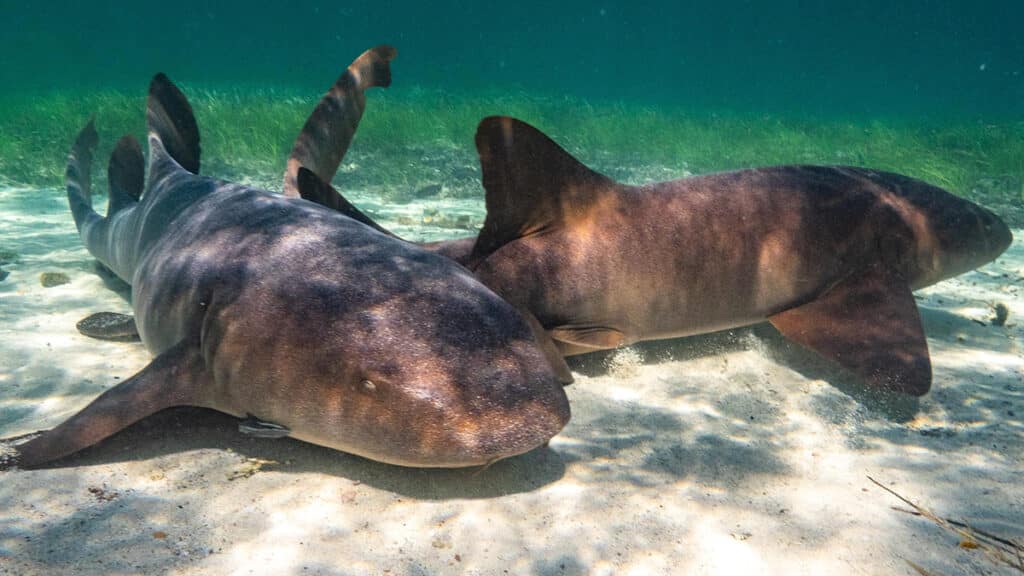
The Bimini Shark Lab was founded by University of Florida researcher Samuel H. Gruber, who was considered the world’s leading expert on lemon sharks. Over the years, researchers have discovered that lemon sharks have individual personalities and, unlike most shark species, prefer to travel in groups.
Bimini isn’t just a shark habitat, it’s a nursery for both lemon sharks and hammerhead sharks, meaning that visitors to the shark lab also have the opportunity to meet baby sharks, too.
Lemon sharks, for example, return to Bimini every 15 years to give birth in the same place they were born, said Fadool. “Bimini is a pupping ground,” she said.
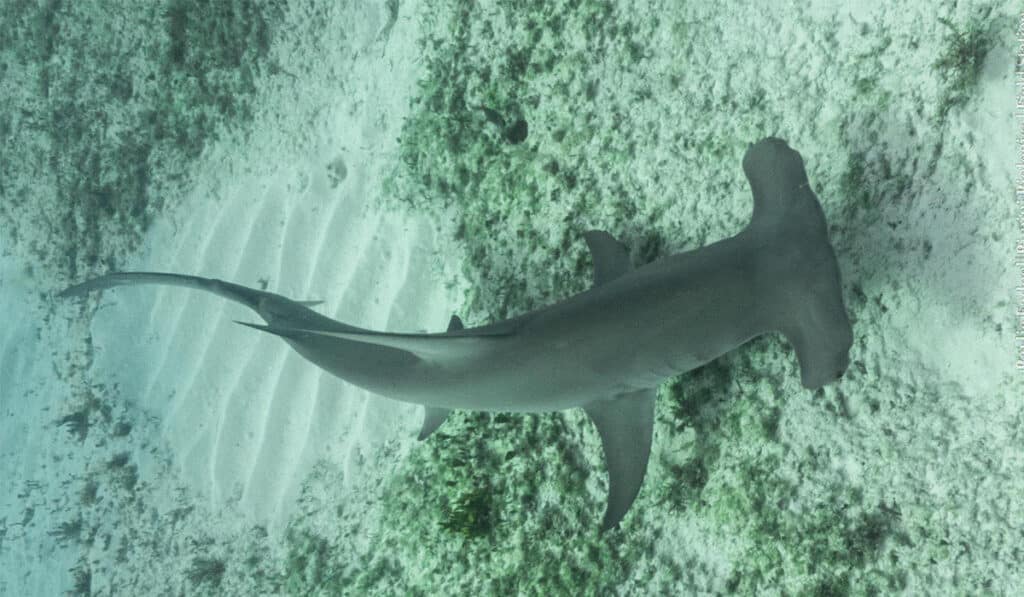
Shark encounters at the Bimini Shark Lab mostly take part in three protected pens in the waters off the island of South Bimini, where the lab is located. In addition to lemon sharks and hammerheads, visitors may also see Caribbean reef sharks, bull sharks, black tip sharks, tiger sharks, nurse sharks, and black nose sharks — plus Southern stingrays, spotted eagle rays, and yellow stingrays.
South Bimini is just a two-minute ferry ride from busy North Bimini (home of the Resorts World Bimini hotel), but is far quieter and laid-back. The Bimini Shark Lab hosts tours two to three times per week, including for cruise ship visitors, but also has a variety of longer programs for educators, students, and anyone else who is interested in sharks.
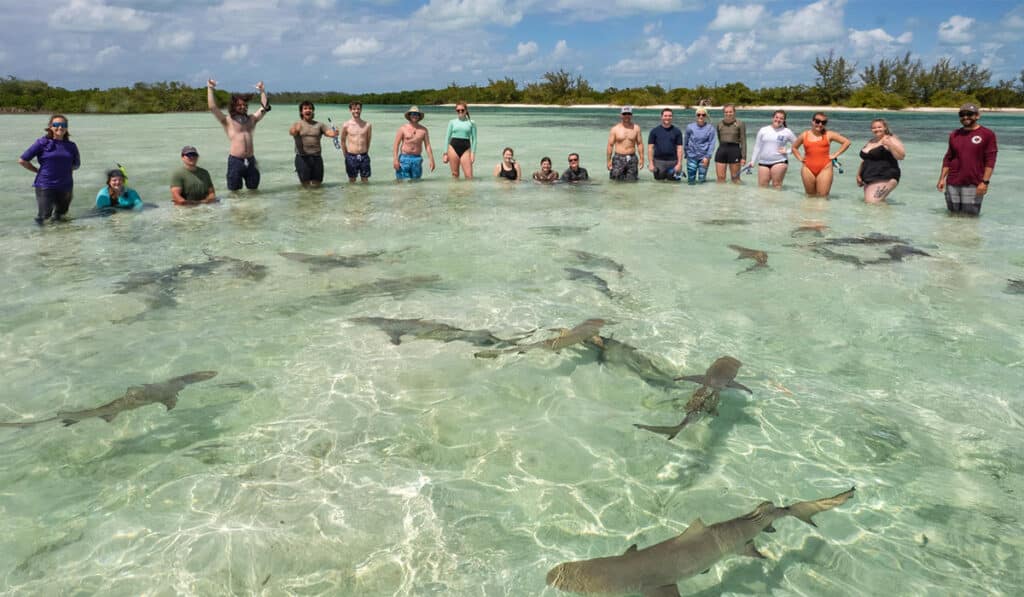
“Bimini is a beautiful place to come and explore amazing wildlife and nature, but also is a place to learn,” said Fadool.
Anyone can sign up for the lab’s five-day Field Expedition or Naturalist programs, for example. Guests stay in accommodations on South Bimini and take part in a variety of activities such as free-diving with lemon sharks, snorkeling with reef sharks, feeding stingrays in Honeymoon Harbor, and snorkeling around the wreck of the SS Sapona, a cargo steamer that ran around off Bimini in 1926.
If you can’t get to Bimini right away, New York is another option: now through Sept. 4, 2023, the American Museum of Natural History is presenting “Sharks!” — an immersive exhibit focused on one of nature’s most enduring species.
Sharks and rays have been swimming the oceans of our planet for more than 450 million years, and the museum exhibit introduces visitors to sharks ranging from inches long to 33-foot whale sharks — gentle giants that are themselves dwarfed by a life-sized model of Megolodon, a now-extinct shark that was up to 66 feet long.
“The display does such a good job of immersing guests into an underwater world using a variety of engaging visuals and activities,” Says Fadool. “It focuses on some of the most commonly recognized sharks but also some lesser-known and acknowledged sharks that guests may have never seen or heard of before. It includes some content from Bimini of the juvenile lemon sharks in the mangroves, and of the great hammerheads foraging over the sand flats. Guests could feel like they were there without actually being there.”
In addition to the plethora of stunning visuals, information on the threats facing sharks is prevalent and at the forefront of the museum displays, “leaving guests caring for and wanting to take action for one of the ocean’s most misunderstood predators,” said Fadool.
